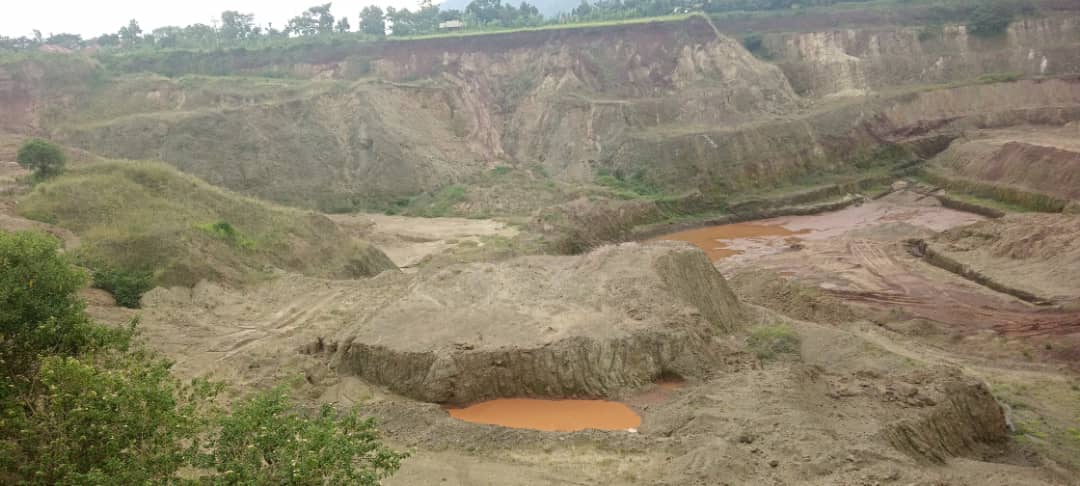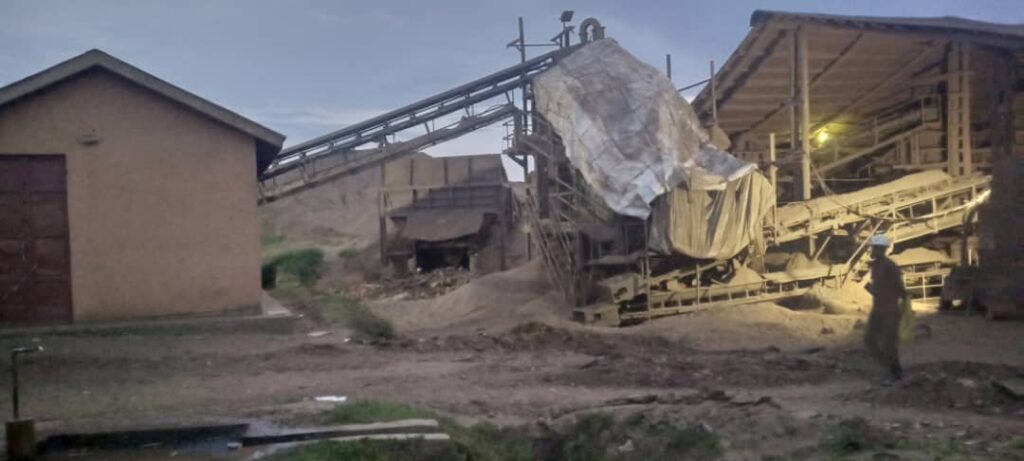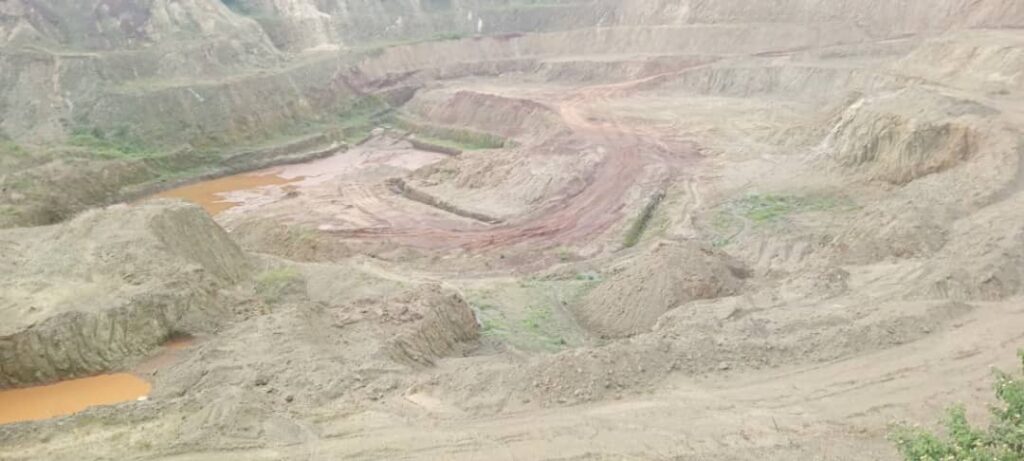
 Time FM
Time FM

 Time FM
Time FM
23 October 2025, 8:24 pm
By Gerald Welikhe
In the hills of Bumasokho Parish, Bugobero subcounty in Uganda’s Manafwa district, the once-green slopes that fed hundreds of families now lie stripped and gray.
Where banana groves and maize once waved in the wind, gaping pits now mark the landscape the handiwork of Namekhala Vermiculite Mining Company Limited. What began as a promise of economic progress has turned into a slow ecological collapse.
Over the past decade, Uganda’s eastern highlands have become a front line of climate vulnerability. Manafwa, known for its steep hills and dense farming population, has lost nearly 30 percent of its forest cover since 2010, according to the National Forestry Authority. Combined with erratic rainfall — now 40 percent less predictable than it was two decades ago — the region’s fragile soil is giving way.

For residents like 38-year-old farmer Nakhombi Benard, the change feels personal and punishing. “The rains used to come in March like clockwork,” he says. “Now they come in May or June — and when they do, it’s either nothing or everything at once.” His yields have plummeted: from ten bags of beans per season to barely three bags of maize. “I can’t feed my family or pay school fees,” he admits.
A few kilometers away in Busumbu Ward, Beatrice Wangota, 53, runs her hand through the soil that once sustained her family. “It used to be dark and rich,” she recalls. “Now it’s gray dust. Even with fertilizer, harvests are half of what they were ten years ago.”
The dust that blankets the community comes from the open pits and trucks of the Namekhala mines. Each gust carries fine vermiculite particles across villages, coating everything from crops, roofs, even water containers. For Malemo Petwa, 29, the effects are suffocating. “Every morning my chest feels tight,” she says. Her five-year-old son suffers chronic respiratory infections, and the local health centre reports rising cases of asthma and bronchitis each dry season.

Environmental officials say mining has worsened natural climate pressures. Without trees or topsoil, rainfall rushes down the slopes, carving deep gullies and flooding lowlands. Uganda’s Ministry of Water and Environment warns that Manafwa and neighboring Bududa are at “high risk of irreversible land degradation” if deforestation and unregulated mining continue.
Local leaders have raised the alarm repeatedly. Maremu Wilson, Local Council Chairperson for Bugobero subcounty, has filed multiple complaints with environmental authorities. “I see what’s happening to our land and our people’s health,” he says. “The mining company must be held accountable.”
The company insists it is taking action. Kaboole Andrew, Namekhala’s Community Relations Manager, says a fume-treatment facility under construction will “cut emissions by 85 percent” and that “water sprinklers will reduce dust.” The company has also distributed drought-tolerant seeds to farmers within a five-kilometer radius. But for residents like Malemo, those promises feel hollow. “They’ve said that for three years,” she murmurs. “I’ll believe it when my children stop coughing.”
This tension between development and survival echoes across Uganda’s mining regions from gold fields in Mubende to sand pits in Lwera where communities are caught between jobs and the loss of arable land. A 2023 Ministry of Health report found that mining zones record 25 percent higher respiratory illnesses than non-mining rural areas, a figure that climbs each year as industrial activities expand.
Still, resilience lingers. As dusk settles over the scarred hills, women gather to share water and seedlings. Small reforestation efforts are taking root, literally saplings of grevillea and avocado planted behind homes to hold the crumbling soil. “We just want balance,” says Beatrice quietly. “We don’t reject progress. We only ask that it doesn’t bury us.”
Experts say community-led restoration could help reverse some of the damage. Environmental NGOs urge a three-pronged recovery plan: reforestation, climate-resilient farming, and strict enforcement of mining regulations. Without it, they warn, Manafwa could see up to 60 percent of its farmland become unusable within a decade.
As the sun sets over the Namekhala mines, fine dust drifts once more through the valley but so does hope. For the farmers of Bumasokho, the fight is no longer just for rain. It is for the right to breathe, to plant, and to reclaim the life the land once promised.